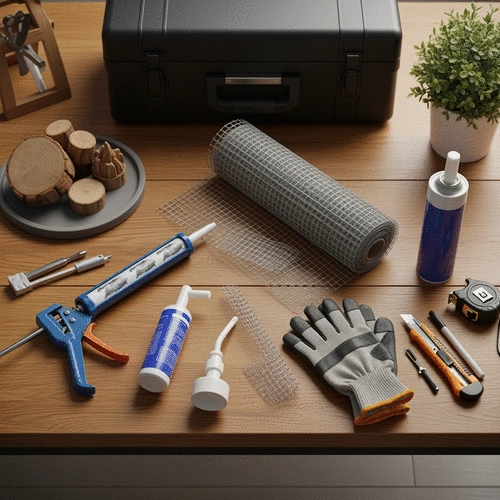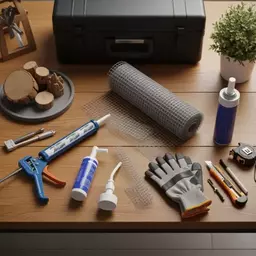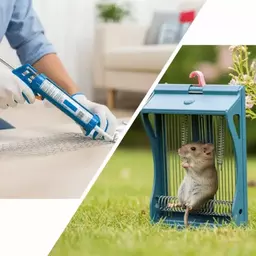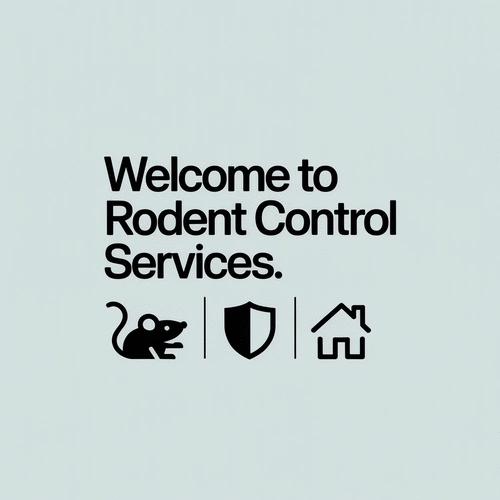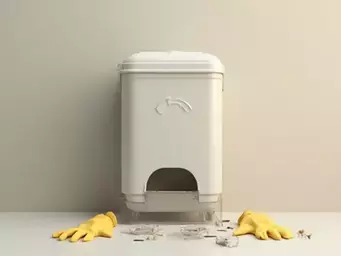As the seasons change, so do the habits of pesky rodents. Are you prepared to protect your home from these unwelcome guests? With a few strategic insights, you can turn your space into a fortress against infestations.
What You Will Learn
- Small entry points can lead to significant rodent problems—seal them effectively!
- Relying solely on traps and poisons is a risky strategy that can endanger your family and pets.
- Regular maintenance and seasonal inspections are essential to keep rodents at bay.
- Choosing high-quality materials is crucial for long-term success in rodent exclusion.
- Understanding rodent behavior can significantly enhance your DIY strategies.
Common Rodent Exclusion Pitfalls and Solutions
Understanding and avoiding these common mistakes is crucial for effective rodent control.
Overlooking Small Entry Points
Mice can squeeze through a dime-sized hole. Many DIY efforts fail by missing tiny gaps.
Relying Solely on Traps & Poisons
Traps won't stop new rodents if entry points are open. Poisons pose risks to kids & pets.
Neglecting Regular Maintenance
Exclusion efforts require ongoing checks; seasonal changes impact rodent behavior.
Avoiding Common DIY Rodent Exclusion Mistakes: An Essential Guide
When it comes to keeping our homes pest-free, effective rodent exclusion is crucial. As a pest management expert, I've seen firsthand how small mistakes can lead to bigger infestations. Whether you're a homeowner or a business owner, understanding the basics of rodent exclusion can save you time, money, and a lot of stress!
In this guide, we’ll cover common pitfalls in DIY rodent exclusion and provide you with practical solutions. By taking a proactive approach, you can maintain a comfortable and safe environment for you and your family. So let’s dive in!
Understanding DIY Rodent Exclusion and Its Importance
DIY rodent exclusion is all about preventing rodents from entering your space. It's not just about setting traps; it’s about taking the right measures to ensure these pests don't find a way inside. Did you know that a mouse can squeeze through a hole the size of a dime? That's why understanding the importance of proper exclusion methods is vital!
- Rodent control starts with sealing entry points.
- Regular inspections can help catch potential issues early.
- Combining exclusion with other strategies increases effectiveness.
By identifying areas where rodents might enter and sealing them off, you’re taking the first step in maintaining a rodent-free environment. It's essential to be diligent in this process to avoid any costly infestations down the line.
Identifying the Right Approach to DIY Rodent Proofing
When it comes to DIY rodent proofing, there’s a fine line between what you can handle yourself and when it’s best to call in the professionals. Many homeowners feel confident tackling minor projects, but some rodent issues can require expert intervention. Have you ever thought about the balance between DIY methods and professional pest control?
- Assess the severity of the rodent problem.
- Consider your own skills and resources.
- Research local pest control services if needed.
While I always advocate for hands-on learning, knowing when to get help can make all the difference. Sometimes, the best DIY solution is knowing your limits and seeking professional guidance when necessary.
Common Pitfalls in DIY Rodent Exclusion and How to Fix Them
Overlooking Small Entry Points: Why It Matters
One of the biggest mistakes I often see is homeowners overlooking small entry points. These tiny gaps can lead to major rodent issues if left unsealed. Let’s explore how to identify these vulnerable spots and seal them properly!
- Check around windows and doors for cracks.
- Inspect utility lines entering the building.
- Look for gaps in the foundation or walls.
By being thorough in your inspection, you can prevent rodents from sneaking in. Remember, even the smallest openings can become major gateways for unwanted pests!
Best Materials for Sealing Gaps
When it comes to sealing those gaps, using the right materials can make all the difference. Here are some durable options:
- Metal mesh: Great for covering holes and vents.
- Concrete sealant: Perfect for filling in larger gaps in foundations.
- Steel wool: Effective for blocking smaller openings.
Using these materials can ensure that once you seal the gaps, they stay sealed. Invest in quality supplies, and you won't regret it!
Relying Solely on Traps and Poisons: A Risky Strategy
Many people think that setting traps and using poisons is all they need to do to eliminate a rodent problem. However, relying solely on these methods without comprehensive exclusion can be a risky strategy. It’s essential to combine trapping with proper exclusion techniques.
Think about it: if you catch a few rodents but haven’t sealed the entry points, more will just keep coming. This cycle can lead to more significant issues down the road!
Health and Safety Considerations for Families and Pets
Using poisons can pose serious health risks, especially if you have kids or pets at home. As the NYC Health Department highlights, it's crucial to understand how to keep your family and pets safe while addressing rodent issues. Here are important safety considerations:
- Store poisons out of reach of children and pets.
- Consider using snap traps as a safer alternative.
- Always follow label instructions when using rodenticides.
By being cautious and choosing safer methods, you can protect your family while effectively managing rodent issues!
Neglecting Regular Maintenance: A Recipe for Disaster
Another common pitfall is neglecting regular maintenance of your rodent exclusion efforts. Just because you’ve sealed up entry points doesn’t mean you can forget about them! Ongoing inspections are key to preventing re-entry.
Make it a habit to check your exclusions regularly. Trust me, a little attention can go a long way in keeping those pesky rodents at bay!
Seasonal Strategies for Maintaining Exclusion
Rodent behavior changes with the seasons, so adjusting your exclusion tactics accordingly is essential. The State of the Rodent Market Report provides valuable insights into seasonal rodent trends, which can help inform your strategies. Here are some seasonal strategies:
- In winter, check for gaps around doors and windows where cold air might seep in.
- In spring, inspect your garden and landscaping for new entry points.
- During the summer, keep food sources sealed and trash disposed of regularly.
By adapting to seasonal changes, you can stay ahead of rodent activity and maintain a pest-free environment all year long!
Choosing Ineffective Materials: The Long-Term Implications
Using substandard materials for your exclusion efforts can lead to problems in the long run. Poor quality materials might not hold up against determined rodents, resulting in wasted time and money.
Investing in quality materials can ensure long-lasting protection and give you peace of mind knowing that you've taken the right steps to keep your home rodent-free.
Understanding Rodent Behavior to Enhance Exclusion Efforts
Finally, understanding rodent behavior can significantly enhance your DIY exclusion efforts. By being aware of their habits, you can create strategies that effectively deter them from entering your space. Have you ever noticed how rodents are most active at night? This insight can help you strategize your exclusion!
Here’s what to look for:
- Common signs include droppings, gnawed materials, and nesting materials.
- Look for entry points that align with their behaviors, such as low to the ground entryways.
- Consider the food sources they might be attracted to!
Recognizing Signs of Mice and Rat Infestations
By being vigilant and recognizing the signs of rodent activity early on, you can take swift action. The NYC Rat Report provides data and insights on rodent activity, underscoring the importance of early detection and intervention. Remember, the sooner you address the issue, the easier it will be to manage!
Pro Tip
Did you know? Regularly monitoring your home for signs of rodent activity can prevent a minor issue from turning into a major infestation. Make it a habit to inspect your property, especially after seasonal changes, and take immediate action if you notice any signs of rodents. Prevention is always better than cure!
Frequently Asked Questions About Rodent Exclusion
- Q: What are the most common entry points for rodents?
- A: Rodents often enter through small cracks around windows and doors, gaps in foundations or walls, and openings around utility lines. Even a dime-sized hole can be an entry point for a mouse.
- Q: Why shouldn't I rely solely on traps and poisons?
- A: Traps and poisons address existing rodents but don't prevent new ones from entering if entry points remain unsealed. Poisons also pose significant health risks to children and pets, making comprehensive exclusion a safer and more effective long-term strategy.
- Q: How often should I check my home for new entry points?
- A: Regular maintenance is crucial. It's recommended to perform seasonal inspections, especially in winter and spring, as rodent behavior changes with the seasons. This ensures that any new gaps or vulnerabilities are addressed promptly.
- Q: What materials are best for sealing rodent entry points?
- A: Durable materials like metal mesh for vents and holes, concrete sealant for foundation gaps, and steel wool for smaller openings are highly effective. Choosing high-quality materials ensures long-lasting protection against rodents.
- Q: When is it time to call a professional for rodent exclusion?
- A: If you observe consistent rodent sightings during the day, persistent activity despite your DIY efforts, visible droppings or nests in hidden areas, or unpleasant odors, it's advisable to seek professional help. Professionals can assess the severity and implement effective, safe solutions.
Summarizing Key Takeaways for Effective Rodent Exclusion
In this guide, we’ve explored the various pitfalls of DIY rodent exclusion and how avoiding these common mistakes can lead to a healthier, rodent-free environment. Remember, successful rodent exclusion relies on a mix of proper sealing methods, the right materials, and ongoing vigilance. It's not just about dealing with an infestation; it's about creating a fortress against future intruders!
To recap, here are the key points to remember:
- Small entry points can lead to significant rodent problems—seal them effectively!
- Relying solely on traps and poisons is a risky strategy that can endanger your family and pets.
- Regular maintenance and seasonal inspections are essential to keep rodents at bay.
- Choosing high-quality materials is crucial for long-term success in rodent exclusion.
- Understanding rodent behavior can significantly enhance your DIY strategies.
Encouraging Ongoing Education and Adaptation
As a pest management expert, I can’t stress enough how important it is to stay informed about rodent behavior and exclusion techniques. Rodents are adaptable, and their habits can change with the seasons or shifts in the environment. By continuously educating yourself, you can adapt your methods accordingly, ensuring your home remains a stronghold against these unwelcome guests!
Consider subscribing to pest control blogs, joining community forums, or following local pest control services like Rodent Control Services for tips and updates. This ongoing learning will empower you to make informed decisions about your rodent management strategies.
When to Seek Professional Help: A Practical Guide
While DIY solutions can be effective, there are instances when professional help is necessary. If you notice signs of a larger infestation, persistent rodent activity despite your efforts, or if you simply feel overwhelmed, it’s time to call in the experts. Here are some key signs that indicate a need for professional pest control services:
- Consistent sightings of rodents during the day, indicating a potential nest nearby.
- Visible droppings, gnaw marks, or nests in hidden areas.
- Unpleasant odors that could be from dead rodents or nesting materials.
- Repeated failures of DIY traps or bait systems.
When choosing a pest control provider, look for experienced professionals who prioritize safe and sustainable methods. Services like Rodent Control Services are committed to providing reliable solutions that keep your spaces safe and pest-free.
Join the Conversation: Share Your DIY Rodent Stories
We’d love to hear from you! Have you tackled rodent issues in your home? What worked, and what didn’t? Share your stories, tips, and questions in the comments section below. By joining this conversation, we can all learn from each other's experiences and create a community that is informed and empowered in our fight against pests!
Recap of Key Points
Here is a quick recap of the important points discussed in the article:
- Seal small entry points effectively to prevent rodent infestations.
- Avoid relying solely on traps and poisons; combine them with comprehensive exclusion techniques.
- Regular maintenance and seasonal inspections are vital to keep rodents at bay.
- Invest in high-quality materials for long-lasting rodent exclusion.
- Understanding rodent behavior can significantly enhance your DIY exclusion strategies.

